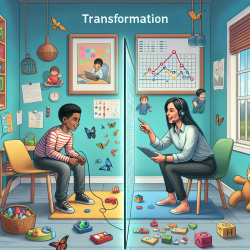Introduction
The Whole School, Whole Community, Whole Child (WSCC) model is a comprehensive approach to school health that emphasizes the integration of health and education. The study "Every School Healthy: An Urban School Case Study" provides a compelling case for the adoption of the WSCC model in urban school districts. As practitioners in the field of speech-language pathology, understanding and implementing the WSCC model can significantly enhance outcomes for children, particularly those with special needs and those learning English as a new language (ENL).
Understanding the WSCC Model
The WSCC model focuses on the coordination, collaboration, and communication (3Cs) of programs, policies, and practices (3Ps) to foster a holistic approach to student health and education. This framework is particularly beneficial in addressing the needs of diverse student populations, including those with special needs and ENL students.
Key Findings from the Case Study
The case study highlights several key outcomes from implementing the WSCC model:
- Development of a district wellness policy that integrates health education into the curriculum, tailored to the needs of special education and ENL students.
- Improved family engagement and community partnerships, enhancing the effectiveness of sexual health education programs.
- Utilization of Youth Risk Behavior Survey (YRBS) and School Health Index (SHI) data to inform and improve health education strategies.
Implications for Practitioners
For practitioners in speech-language pathology, the WSCC model offers a framework for integrating health and education in a way that is responsive to the diverse needs of students. Here are some practical steps to consider:
- Data-Driven Decision Making: Utilize tools like the YRBS and SHI to gather data that informs your approach to speech and language interventions.
- Collaboration with Stakeholders: Engage with families, educators, and community partners to create a supportive network for students.
- Tailored Interventions: Develop interventions that are sensitive to the cultural and linguistic needs of ENL students and those with special needs.
Encouraging Further Research
While the case study provides valuable insights, further research is essential to understand the full impact of the WSCC model on student outcomes. Practitioners are encouraged to conduct their own studies, focusing on specific interventions and their effects on student health and learning.
Conclusion
The WSCC model represents a transformative approach to school health, offering a pathway to improved educational and health outcomes for all students. By adopting this model, practitioners can play a crucial role in fostering environments where every child can thrive.
To read the original research paper, please follow this link: Every School Healthy: An Urban School Case Study.










